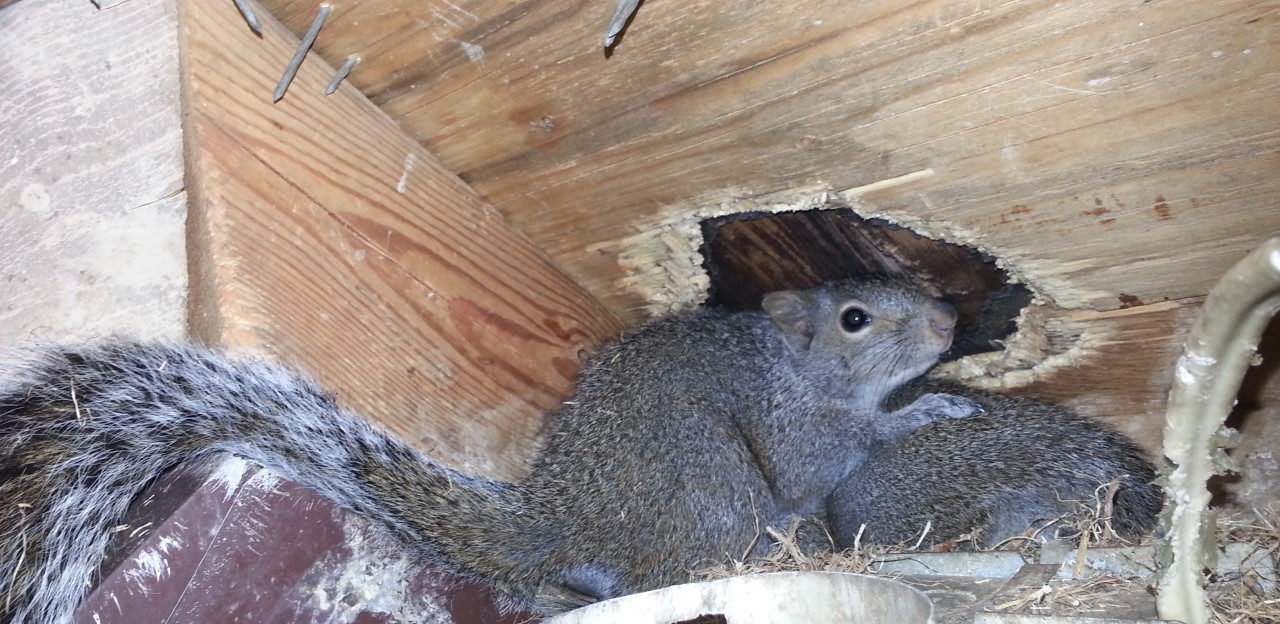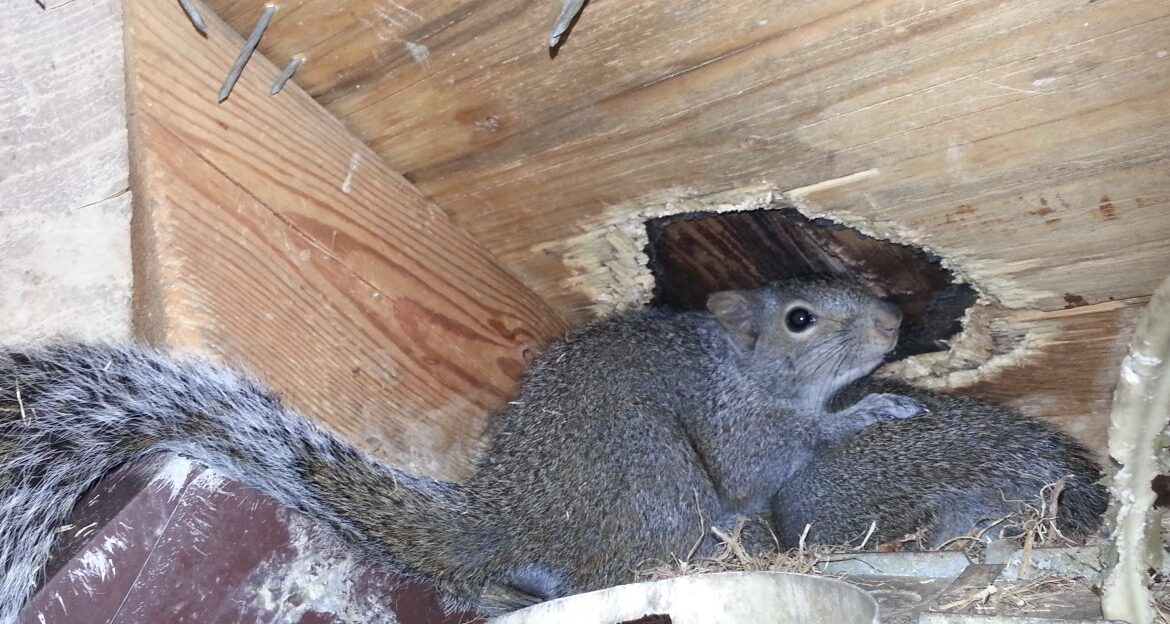Squirrels, those active and nimble creatures known for their tree-dwelling antics, have a knack for building nests. But did you know that sometimes, these furry acrobats take their nesting habits a step further and seek shelter in their own homes? Understanding squirrel nesting seasons is essential for homeowners like you, as it can help you protect your property from damage and unwanted guests.
So, let’s explore the fascinating world of squirrel nesting, from how they construct their nests to why they’re drawn to our properties. We’ll also delve into the importance of knowing when to expect their nesting activities. By the end, you’ll have a better understanding of these industrious creatures and how to keep them from turning your home into a cozy retreat.
And if you ever need expert help, remember Skedaddle Humane Wildlife Control in Pickering is here to assist you.
How Squirrels Build Their Nests
Squirrels are adept builders, creating safe, sturdy homes to protect themselves and their young. The materials they use are incredibly resourceful, and the types of shelters they build vary depending on their environment.
Materials Used
What does a squirrel nest look like? Squirrels rely on natural items to craft their homes, typically incorporating materials like twigs, leaves, and moss. They carefully weave these elements together to ensure their nests are strong and weather-resistant. But when they venture near human homes, they sometimes incorporate unconventional materials like insulation, cardboard, or even clothing found near homes to add extra warmth and stability.
Types of Nests
There are two main types of squirrel homes:
- Dreys are the most common type of squirrel dwelling. These are ball-like structures tucked into the forks of tree branches. From the ground, they might appear as oversized clusters of leaves.
- Cavity Nests are preferred when squirrels find hollow tree trunks, which naturally offer warmth and protection. Unfortunately, these cavity-seekers sometimes mistake our attics, chimneys, or wall voids as the perfect alternative.
When to Expect Squirrel Nesting Activity
Squirrels have two main nesting seasons each year, closely tied to their breeding cycles. These busy times play a big role in ensuring the survival of their young.
The first nesting season happens from late winter to early spring. During this time, squirrels prepare for their first litters of the year. With food supplies often running low after winter, they search for warm, safe spots to raise their young. Tree cavities and well-built dreys provide the protection they need to keep their babies secure and comfortable.
The second nesting season takes place from late summer to early fall. This is when squirrels get ready for their second litter. As the weather begins to shift, these nests become vital shelters for the new generation, offering safety and a place to grow.
Squirrels’ instincts during these seasons help ensure the survival of their offspring. By finding warm and secure locations, they give their young the best chance to thrive and continue the cycle of life.
Why Squirrels Choose Your Home
Human homes inadvertently provide ideal conditions for these animals. But why are they drawn to our properties time and time again?
Elements like attics, chimneys, and voids in walls offer squirrels easy access and plenty of warmth. The insulation in these areas mimics the softness of natural nesting materials, creating a cozy environment for raising their young. Additionally, food sources such as bird feeders, pet food bowls, or even unsealed garbage can make living near humans appealing.
Discovering signs of squirrel nests in your home can help you address the issue promptly and protect your property. Keep an eye out for these indicators:
- Scratching or Scurrying Sounds: If you hear scratching or scurrying noises coming from your attic, walls, or chimneys, it could be a sign of squirrels nesting. These sounds indicate their activity as they build and maintain their nests.
- Chewed Wood or Insulation: Squirrels have a habit of gnawing on wood and insulation materials to create entry points and gather nesting materials. Check for chewed areas or shredded insulation in your attic or other potential nesting sites.
- Debris Near Entry Points: Squirrels often leave debris like twigs, leaves, and nesting materials near their entry points. Keep an eye out for these signs near vents, holes, or gaps in your home’s exterior.
Remember, if you suspect squirrels have made a nest in your home, it’s important to take action to prevent property damage and potential health risks. Consult with a professional wildlife removal service to safely and humanely address the issue. They can help identify the entry points, safely remove the nests, and provide solutions to prevent future infestations.
The Risks of Having Squirrels in Your Home
Having squirrels nesting in your home may seem harmless at first, but it can lead to serious problems. Let’s look at some of the risks involved.
Squirrels can cause damage to your home by chewing on insulation, wiring, and even parts of the structure. Chewed insulation becomes less effective, leading to drafts and higher energy costs. Even more concerning, squirrels often chew through electrical wiring, which increases the risk of fires.
Another issue is the mess they leave behind. Squirrel droppings and urine can contaminate your home, creating bad odours and potential health risks. Over time, this waste can make areas unsanitary and may require professional cleaning to ensure safety.
If you suspect squirrels in your home, it’s important to act quickly. A professional wildlife removal service can help locate entry points, remove the squirrels and their nests, and take steps to prevent them from returning. Addressing these problems early can save you money and keep your home safe.
What Professionals Will Do If Called
When squirrels find their way into your home, they can cause various issues that may affect your health and safety. Here are some of the common problems associated with squirrel activity.
Squirrels have a natural instinct to chew, and unfortunately, they don’t discriminate when it comes to what they chew on. They can damage insulation, gnaw on electrical wiring, and even harm structural components of your home. This can lead to costly repairs and potential hazards.
Chewed electrical wires pose a significant fire hazard. Squirrels’ sharp teeth can easily damage wiring, increasing the risk of electrical faults and potential fires. It’s crucial to address these hazards promptly to ensure the safety of your home and family.
Squirrel droppings and urine can contaminate your living space, leading to unpleasant odours and potential health concerns. The accumulation of their waste can create an unsanitary environment, affecting the air quality in your home.
Protect Your Home this Squirrel Season
Squirrel nesting seasons bring the potential for adorable backyard observations—but also the risk of uninvited guests getting too close for comfort. Recognizing their seasonal habits and understanding how they build their shelters is the first step in protecting your home.
If you’re dealing with animal activity in your home, our team at Skedaddle Humane Wildlife Control in Durham is here to help. We specialize in humane, effective wildlife solutions, offering complete removal and restoration services to ensure your property remains undisturbed.
Contact us today to request a quote or learn more about our services. Protect your home and keep it safe from unwanted guests this season!




